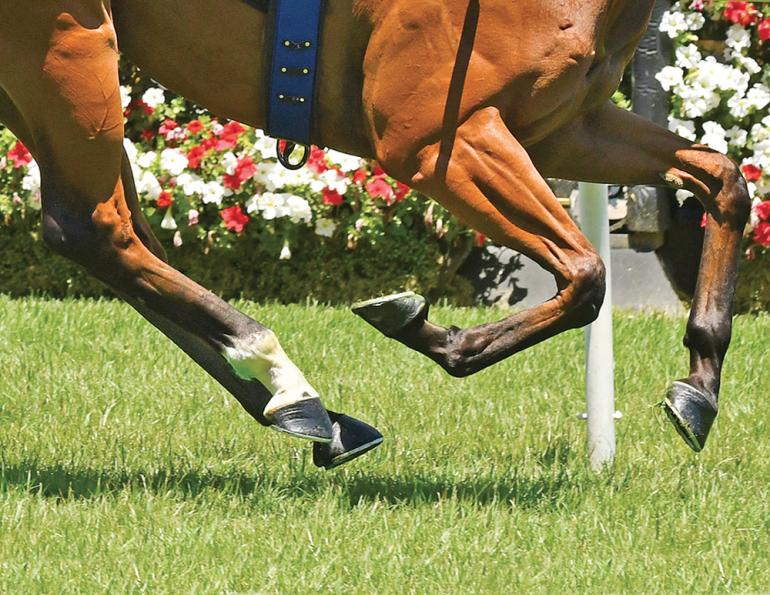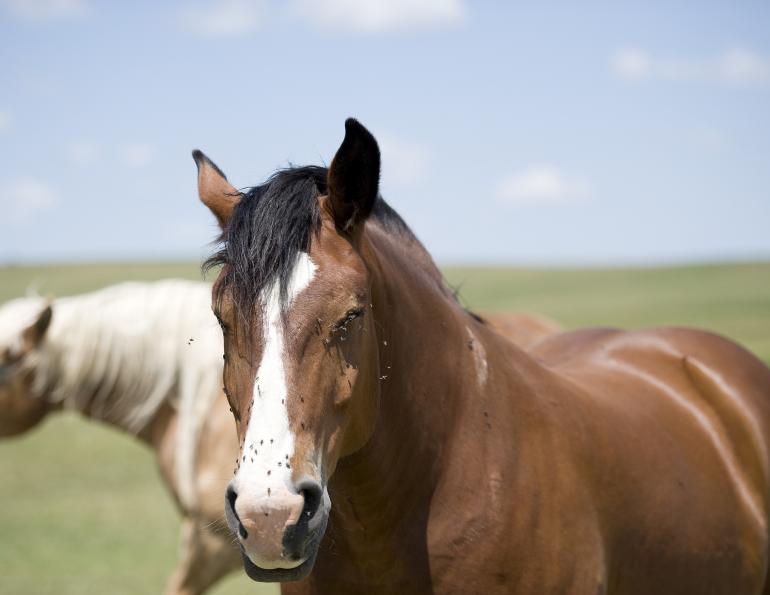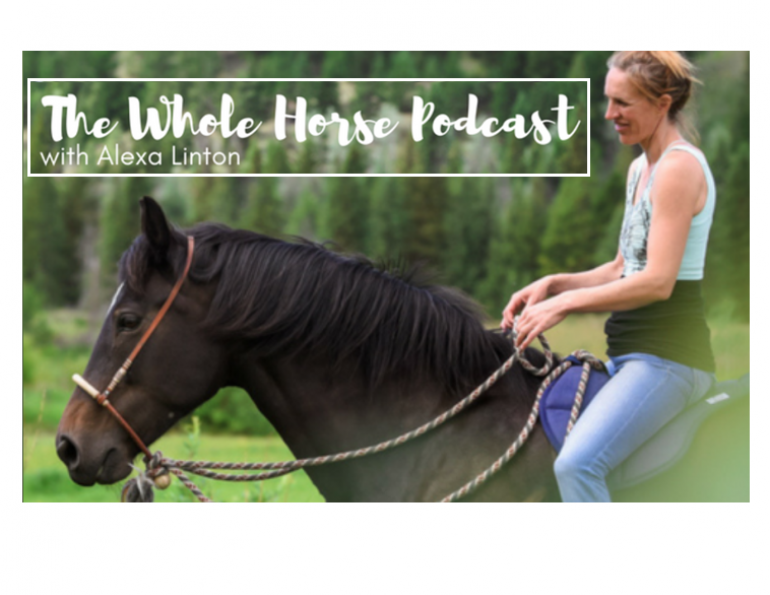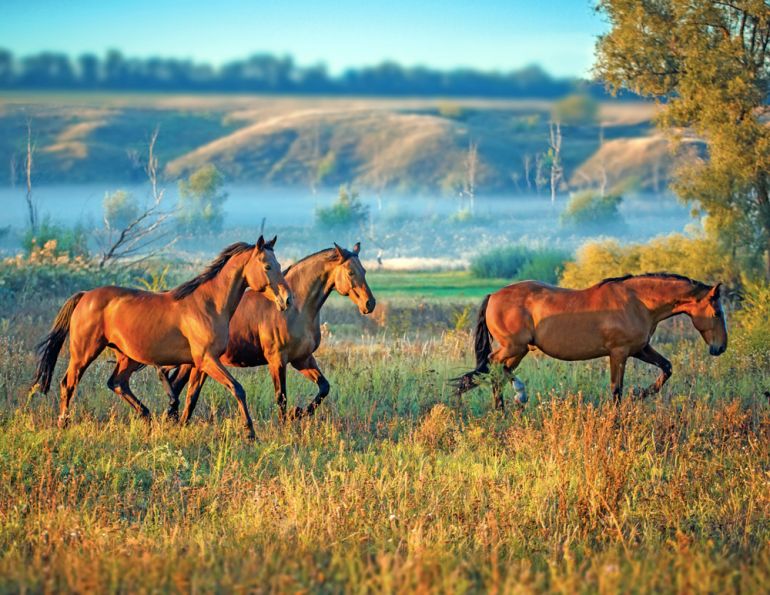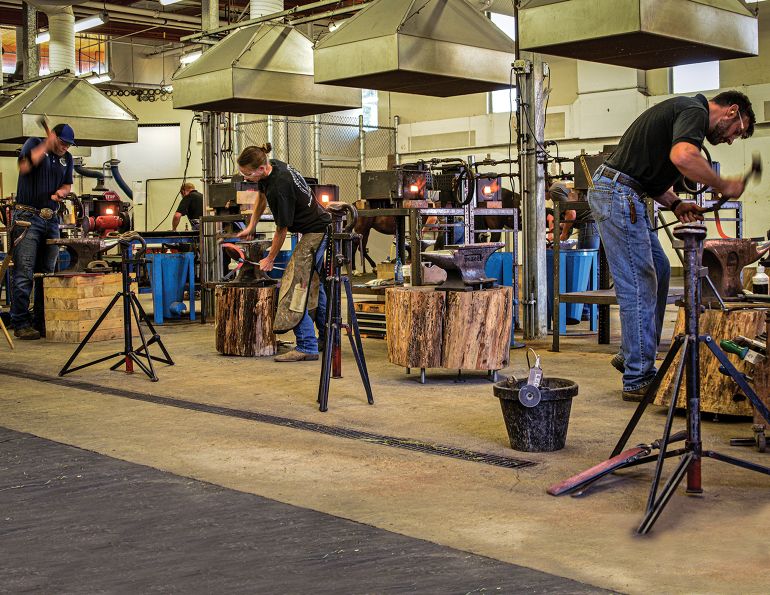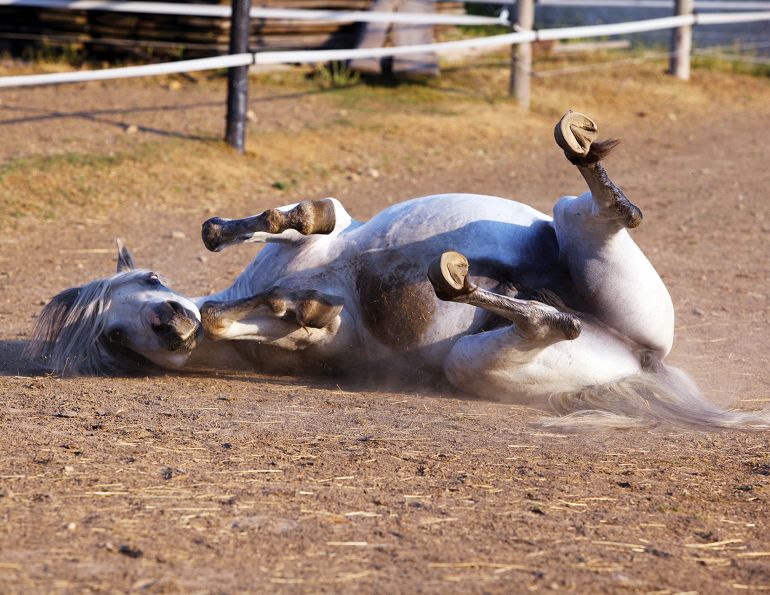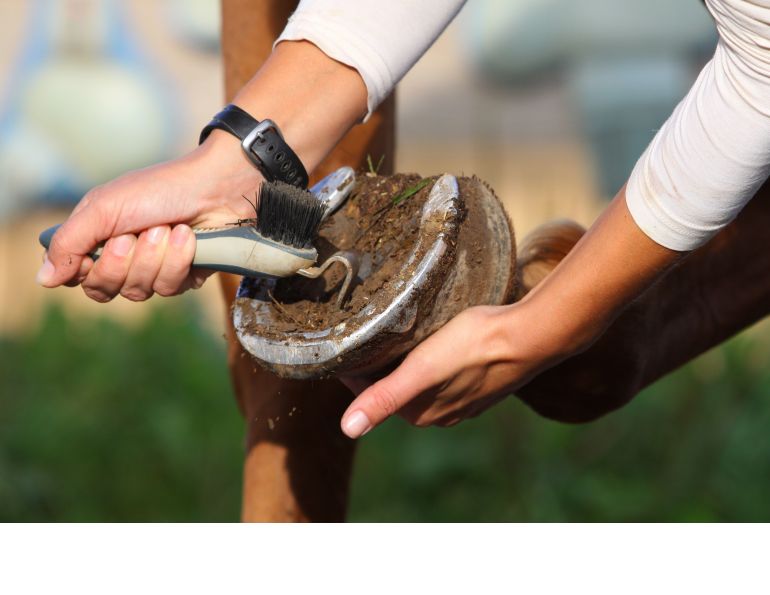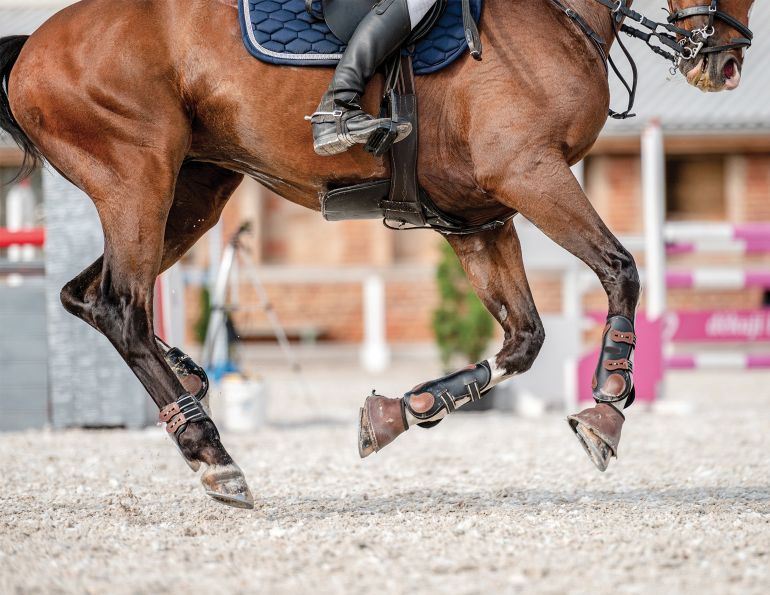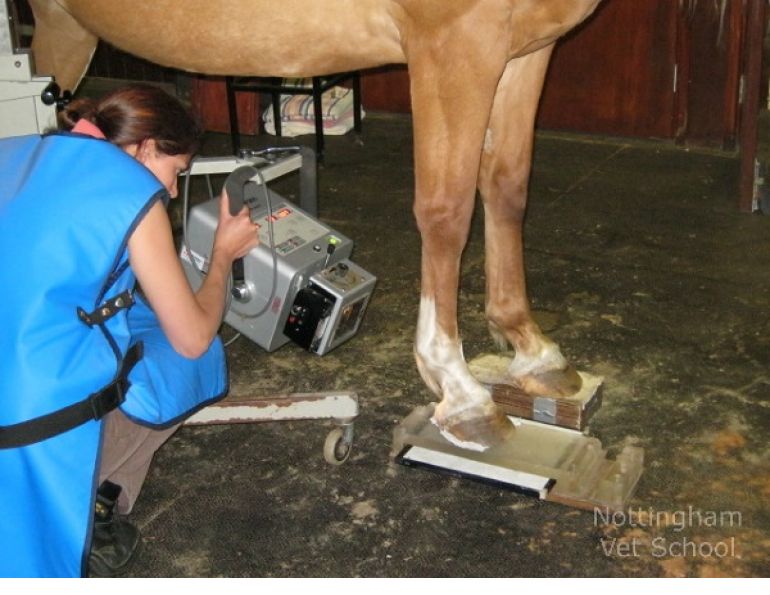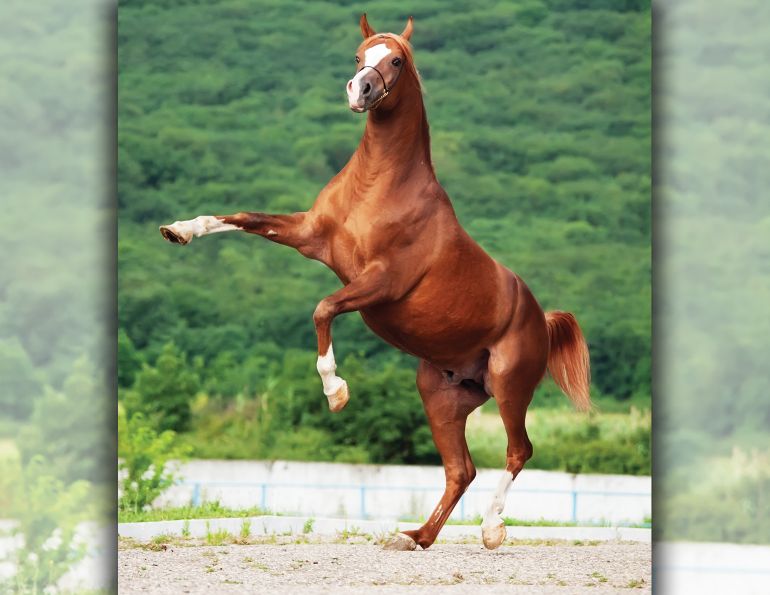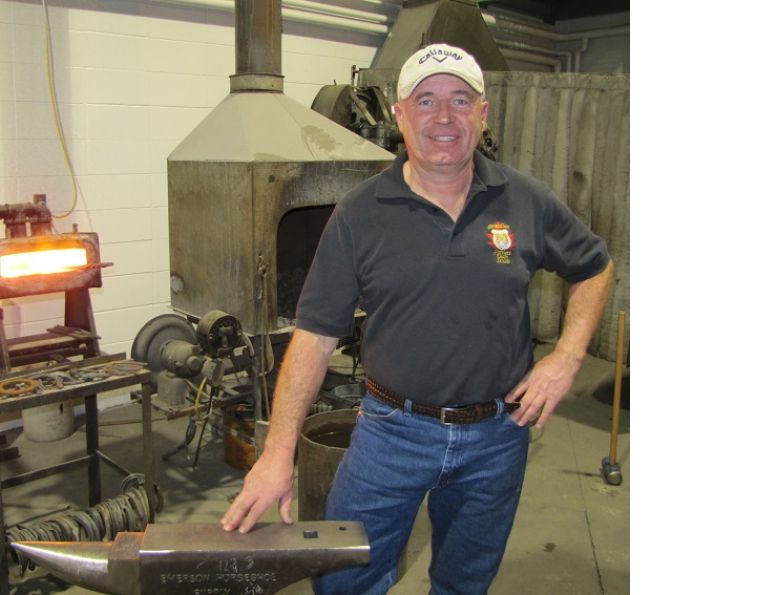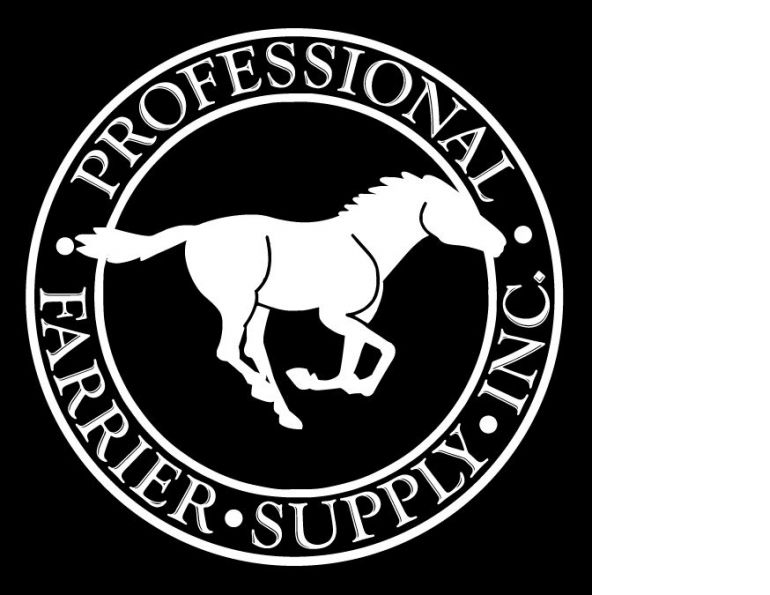Does your horse’s diet support good hoof health?
By Shelagh Niblock, PAS
The old adage “No Hoof, No Horse” can be a painful reality for owners who struggle with chronic hoof health issues in their horse. The four hooves of a 500-kilogram horse are expected to carry large amounts of body weight. When the compression force of work such as galloping is factored in, each of those four feet may be carrying as much as 3,000 pounds of force. Horses with hoof problems such as frequent cracks, fissures, or hoof texture that is shelly and fragile, are often candidates for time off due to lameness and the frequent loss of shoes. The owner of a horse that can’t keep a shoe on knows very well how frustrating poor hoof quality can be.
Achieving Healthy Hooves Through Husbandry
Hoof health will be significantly influenced by the horse husbandry provided. Management factors, such as footing and environment, play a major role in the health of the feet. Horses should have a comfortable, safe place to lie down, and as much as possible, the footing in stabling and pasture areas should be dry and free of mud. Regular cleaning of surfaces prevents accumulations of manure and urine. Research has shown that horses with healthy hooves are able to withstand adverse environmental conditions far better than horses with poor quality hoof horn. Poor footing and wet, dirty conditions can exacerbate hoof problems, stacking the deck against your efforts to achieve healthy hoof growth.

For the average horse at a gallop, the compression force on each hoof upon impact can reach 3,000 pounds per square inch. Photo: Shutterstock/Karengesweinphotography
Your choice of a farrier and the timeliness of his or her visits are also important. Hooves not adequately trimmed or trimmed/shod with poor angles and insufficient attention to the inherent characteristics of the hoof structures will be subject to more stress from everyday work. It is important to choose the type of trim and shoe necessary to facilitate the individual horse in his specific job. A qualified farrier can assist with your plan for good hoof health.
The Role of Nutrition
Nutrition plays an important role in many aspects of horse health, and its impact on the horse’s overall success and well-being is multifaceted. In mature horses, that impact includes tissue repair and immune function, as well as the horse’s ability to adapt to the physical requirements of his job. Research has shown that nutrition can be significantly involved in endocrine function. Diet is also implicated in the health and function of the fibre-fermenting capacity of the hindgut, which is a major contributor to the overall health and energy balance of any horse.
Related: Recognizing and Managing Club Foot in Horses
Although footing, environment, and a good relationship with a farrier are important, nothing is as essential to hoof health as nutrition. No horse cannot achieve good hoof growth without receiving the nutrients to facilitate it. A well-balanced diet, with sufficient nutrients to support the horse’s metabolic requirements for maintenance, work, and growth if required, will also adequately support good hoof health. Some nutrients are especially important in maintaining healthy hooves, and this is particularly true in horses with poorer quality hooves or horses undergoing stress or disease conditions.

Good management of the horse’s footing and environment will have a positive influence on hoof health. Pasture and stabling areas should be clean, dry, and free of mud. Wet and dirty conditions will cause or worsen hoof problems. Photo: iStock/Rolf_52
Protein and Amino Acids
Dietary protein is comprised of building blocks called amino acids. A total of 22 amino acids are potentially present in protein sources, and 10 of them are considered essential for horses. This means the horse must consume them in his diet because he cannot manufacture enough of them in his body to supply his complete protein needs. Two amino acids considered very important for hoof health are the sulfur-containing amino acids methionine and cysteine. Methionine is a limiting amino acid and therefore must be provided in the diet.
Both cysteine and methionine are important constituents in the growth of keratin in healthy hooves. Horse hooves are comprised of a protein called keratin, and cysteine and methionine are found in the keratinizing epidermis of the hoof wall. Methionine is more associated with internal laminae structure; in healthy hooves, it is converted to cysteine through a unique metabolic process involving the B vitamin biotin. Newly manufactured cysteine then forms part of the fully keratinized external hoof wall.
Related: Common Hoof Problems
Diets that are low in protein can lead to cracked, fissured hooves in horses, and research suggests that it is the deficiency of methionine, and consequently cysteine, that can lead to this. As well, any problems associated with the metabolic pathway, which facilitates the conversion of methionine to cysteine, appear to have significantly adverse effects on the growth of a healthy hoof wall.
Macro and Trace Minerals
The equine hoof has a significant content of macro minerals like calcium and phosphorous, and so these minerals need to be provided in the equine diet. For optimum hoof health though, the key consideration is to provide these minerals in the correct balance. Diets high in phosphorous may tie up the availability of calcium, causing a diet that should contain adequate levels of calcium to be inadequate in calcium because it cannot be utilized by the horse. Avoid imbalances that might negatively impact hoof health by paying close attention to the calcium and phosphorous content of the supplements and forages fed.
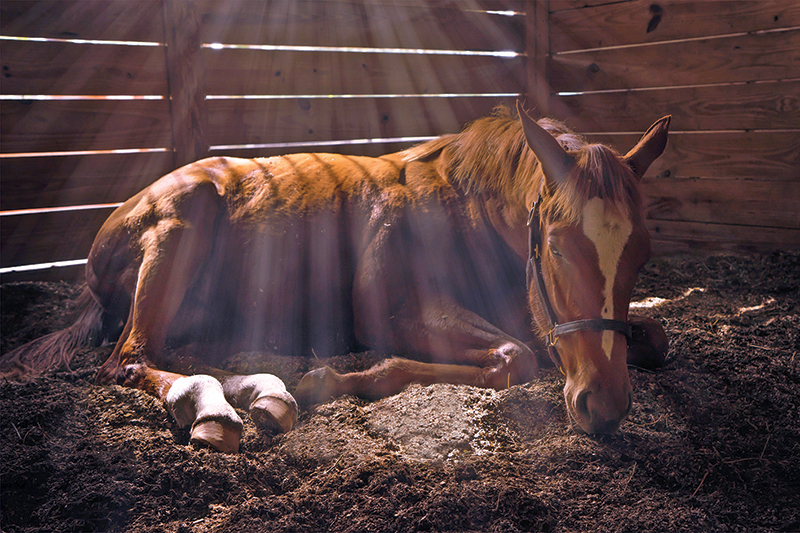
Horses should be provided with a dry, safe, and comfortable place to lie down. Photo: Shutterstock/Lindsay Helms
Copper, zinc, and selenium are all very important for good hoof health. Copper and zinc support hoof growth and health through the production of important enzymes, but diets that are too high in zinc can impact the availability of copper; therefore, a diet that is balanced for these two trace minerals is critical. Selenium is needed for good hoof growth, and equine diets containing one to three mg of supplemental selenium per day may be helpful in supporting optimum hoof health and growth in your horse.
Chelated or Not?
Trace minerals, in particular copper, manganese, zinc, and selenium, are often marketed to horse owners as “organic,” “complexed,” or “chelated.” All of these terms refer to processing of the trace mineral, whereby it is complexed or loosely connected at a molecular level to another substance, usually an amino acid. An example of this is zinc methionine.
Sometimes the mineral is provided in yeast cultures, which have been grown on a medium containing the trace mineral. Selenium yeast is an example of this. The expectation is that the amino acid including the attached trace mineral will be more readily absorbed than the trace mineral alone. The premise is that we can increase the absorption of trace minerals that might be tied up by the presence of other trace minerals like iron in the digestive tract, and are therefore unavailable to the horse. Complexed or trace minerals are supposed to work by bypassing the typical absorption sites.
There are conflicting results from research as to whether complexing or chelating trace mineral helps increase body reserve of important trace minerals. While the research proving increased absorption of the trace mineral is unclear, nothing has suggested that the absorption of these important trace minerals is reduced when fed in a complexed form. If you are in an area where water and soil are high in iron, it is worth considering them for your horse’s hoof health program. Complexed or chelated trace mineral sources may provide a platform for improved trace mineral status for horses in challenging environments.
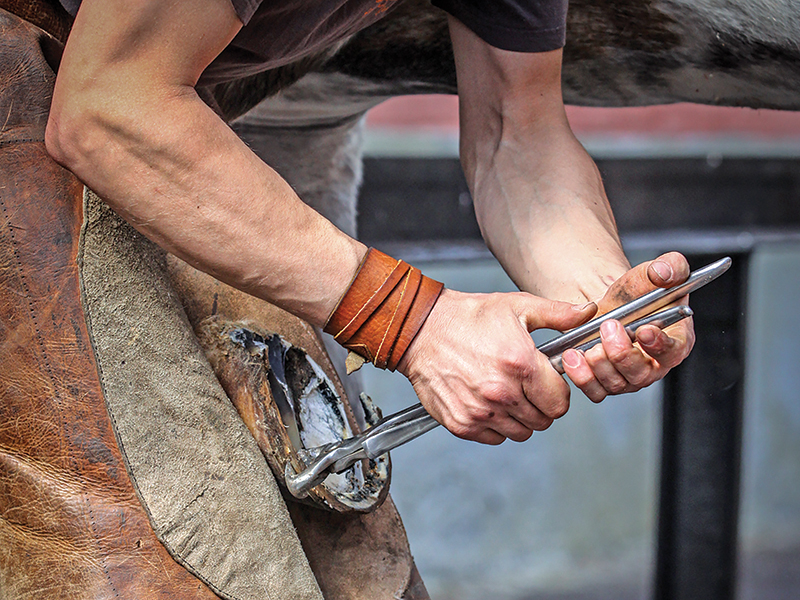
Seek the advice of a qualified farrier when planning your horse’s hoof care program. Photo: Shutterstock/Mariait
Biotin
Biotin is a water-soluble B vitamin that has attracted a lot of research attention in multiple species of livestock over the years. Certainly for horses, the research provided in the National Research Council (NRC) 2007 Nutrient Requirements of Horses equine nutritional guidelines has shown that supplementation of biotin in the equine diet of 10 to 20 mg (equivalent to 10,000 to 20,000 µg or micrograms) daily will improve hoof wall integrity following nine months of treatment, but it will not affect hoof growth rate. NRC also suggests that hoof structure and hoof wall tensile strength was improved after 33 to 38 months of supplementation. This feeding suggestion is supported by good peer-reviewed research, but it is also a reminder that good hoof health does not happen overnight.
Related: Understanding Laminitis
Damage to Hooves and Associated Structures
Horses that have suffered long-term damage to hoof structures such as the laminae, the bursa adjacent to the navicular bone, or horses that have damage from diseases like white line disease or “seedy toe,” are often in chronic pain. Remedies other than the use of non-steroidal anti-inflammatory drugs (NSAID) or corticosteroids are frequently unhelpful. Nutrition and time are very important for these horses, as is paying close attention to the intake of the important essential amino acids, in particular methionine, as well as the trace minerals copper and zinc. Nutrition in combination with rest and the attention of a good farrier can be helpful in allowing horses afflicted with these conditions to enjoy some form of working life.
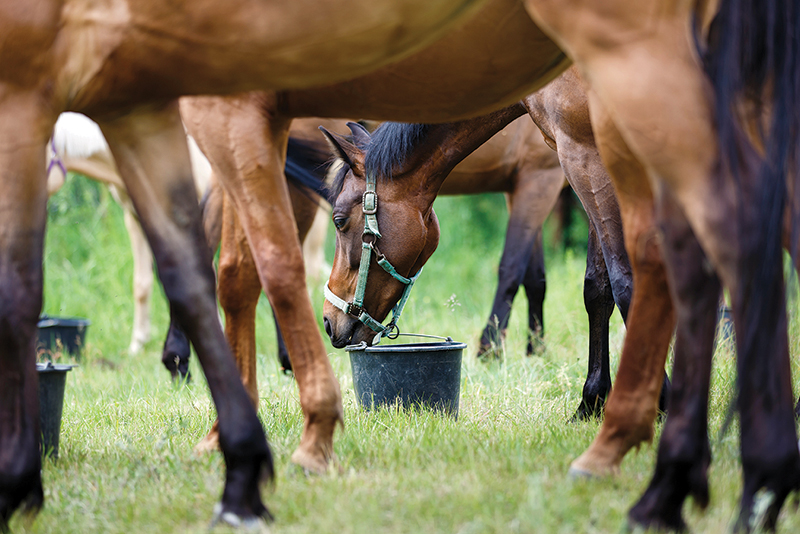
Nothing is as essential to hoof health as proper nutrition. Photo: Konstantin Tronin
Overweight Horses
Overweight horses are most definitely at greater risk of hoof health issues. Excess body weight puts more stress on hoof structures, especially if these horses are working. Excess body fat accumulations can also have an inflammatory effect on body tissues, exacerbating conditions in the foot that may reduce the growth of healthy tissues.
Nutritional Supplements
There are a variety of supplements available online and at the local feed store for horse owners seeking to provide the nutrients needed to address hoof health concerns. When selecting a supplement, always look for the presence of nutrients that have been proven, through peer-reviewed research, to be beneficial to hoof health. Amino acids like methionine are good, as well as copper and zinc, complexed or not, in correct ratios. Biotin is a “must have” for any supplement purporting to enhance hoof health, but it must be at an adequate level. Supplements claiming to help hoof health should be providing 10 to 20 mg of biotin daily. When choosing a nutritional hoof supplement, remember that it cannot help the hoof tissue that’s already there; it will only help future growth of tissue. For that reason, a good nutritional hoof supplement will take at least six months, and probably a year, to demonstrate if it’s working for your horse.
Poor Hooves Despite Best Efforts?
You’ve paid attention to every detail and your horse still has poor feet? To a certain degree, horse hoof characteristics are controlled by genetics. Some horses just have poor feet despite the interventions we provide. Flat feet and poor hoof walls can be difficult to address through management changes and diet. For the horse with poor hooves, employ the most comprehensive management protocol you can accommodate. Consistent attention to environment, nutrition, and farrier care will deliver the best return on dollars spent.

Cracked and fissured hooves can result from a diet low in protein. Photo: Clix Photography
A management program for healthy hooves should include a sound nutritional plan, attention to footing and housing, and a good relationship with a qualified farrier. Provide the horse with a place to lie down comfortably every day. Remember that a healthy body condition score is just as important for hoof health as it is for athletic performance. A diet plan that provides the nutrients for optimum hoof health will benefit the horse, but it won’t happen overnight, so be prepared to make a long-term commitment to healthy hooves. Take pictures and keep records along the way. Remember: an investment in healthier hooves through diet will take time and commitment, but the rewards for both you and your horse can be significant.
Related: Good Hoof, Bad Hoof
Related: Treating Navicular Disease with Farriery
Main article photo: iStock/Quentinjlang



